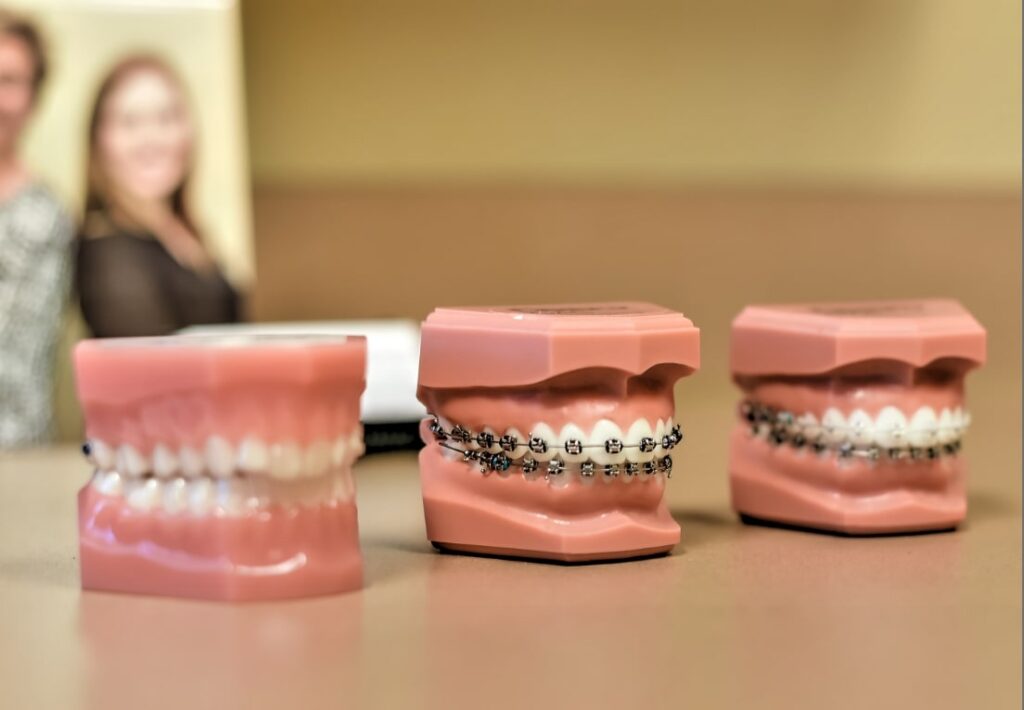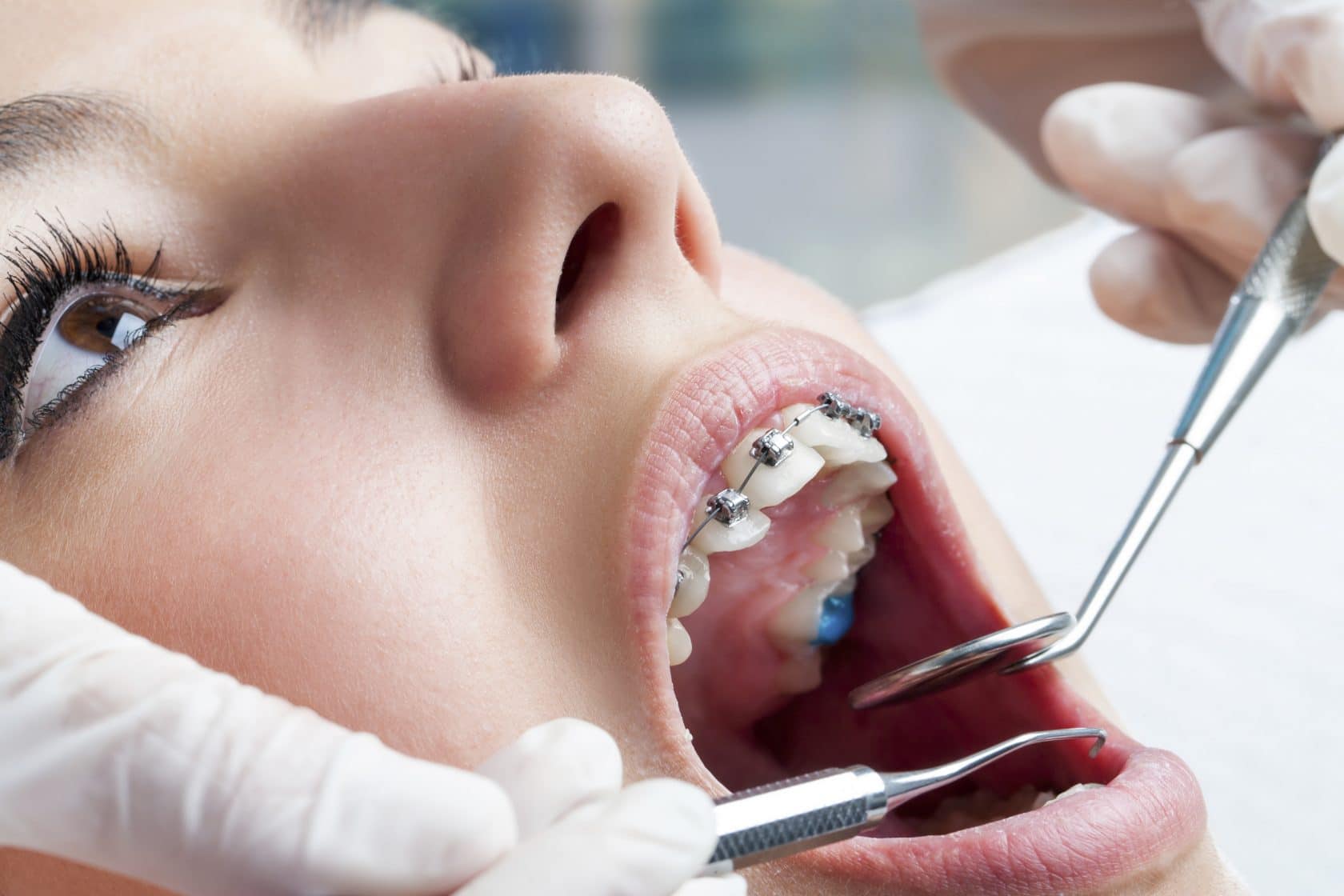How Cumming Orthodontics Addresses Common Braces and Invisalign Worries
How Cumming Orthodontics Addresses Common Braces and Invisalign Worries
Blog Article
Comprehensive Guide to Orthodontics Procedures for Remedying Dental Misalignments
In the world of orthodontics, the journey to attaining a completely lined up smile includes a myriad of procedures customized to fix dental imbalances. From traditional dental braces to unseen aligners and also surgical options, the field of orthodontics offers a variety of solutions to deal with varying degrees of dental irregularities. Comprehending the details of each procedure, including their systems, advantages, and potential downsides, is important in making educated choices concerning one's orthodontic treatment. As we navigate via the extensive overview to orthodontic procedures for correcting oral imbalances, the complex information of each technique will certainly unfold, losing light on the course towards a unified and functional oral alignment.
Orthodontic Procedures Review

Routine adjustments and monitoring are crucial parts of orthodontic therapy to guarantee progress is on track and to make any type of essential alterations along the means. By going through orthodontic procedures, individuals can not only attain a straighter smile yet also improve their overall dental health and function.
Conventional Braces: How They Function
When thinking about orthodontic therapies for dental misalignments, traditional braces stand out as a tried and true method for correcting teeth placing. Conventional braces consist of brackets, cords, and bands that work with each other to use continuous stress on the teeth, gradually relocating them right into the desired positioning.
As stress is applied to the teeth with the braces, the bone surrounding the teeth is reshaped to support the new tooth placements. Patients will certainly require normal adjustments at the orthodontist's office to guarantee the braces proceed to use the appropriate stress for efficient teeth activity.
Invisible Aligners: Disadvantages and pros
These clear, personalized trays are virtually unseen when put on, making them an enticing option for people looking for a much more visually pleasing orthodontic therapy. Individuals can get rid of the aligners before eating or brushing their teeth, lowering the threat of food getting stuck in the home appliance and streamlining the cleansing procedure.

Surgical Orthodontic Options
Surgical interventions in orthodontics present viable alternatives for resolving complex oral imbalances that may not be effectively solved with conventional orthodontic therapies. While unnoticeable aligners and standard braces can correct many orthodontic issues, particular cases call for medical treatment to achieve optimum outcomes. Surgical orthodontic options are usually recommended for severe malocclusions, significant jaw discrepancies, and situations dental dictionary where the underlying bone structure requires adjustment to attain correct alignment.
One typical medical orthodontic procedure is orthognathic surgical procedure, which entails repositioning the jaws to fix practical concerns such as trouble chewing or talking. This surgery is commonly performed in partnership with an orthodontist who aids straighten the teeth prior to and after the treatment. Surgical orthodontics may also involve treatments to reveal impacted teeth, remove excess gum tissue, or reshape the jawbone to develop an extra harmonious face profile.
Before considering surgical orthodontic alternatives, patients undergo a thorough examination to determine the requirement and potential benefits of such interventions. cumming orthodontics. While surgery might appear complicated, it can considerably enhance both the function and appearances of the smile in situations where traditional orthodontic treatments fall short
Retainers and Post-Treatment Treatment

Post-treatment treatment involves adhering to the orthodontist's guidelines diligently. This may include proper oral hygiene methods, going to follow-up consultations, and wearing the retainers as prescribed. Failure to abide by post-treatment treatment instructions can result in relapse, where emergency extraction near me the teeth slowly move back towards their original settings. Constant retainer wear, good oral hygiene, and routine dental examinations are crucial for maintaining the outcomes attained with orthodontic surgical procedure and guaranteeing the long-term stability of the corrected dental placement.
Verdict
To conclude, orthodontic procedures supply different alternatives for fixing oral imbalances. Typical dental braces utilize steel braces and cords to shift teeth right into appropriate positioning. Unseen aligners give a more discreet option but might not be ideal for all cases. Surgical orthodontic alternatives are available for much more serious imbalances. Retainers are frequently made use of post-treatment to keep the new positioning. In general, orthodontic treatments can successfully improve dental wellness and visual look.
As we navigate through the comprehensive guide to orthodontic procedures for fixing dental misalignments, the detailed information of each approach will unfold, shedding light on the course towards a harmonious and practical dental placement. - invisalign
One of the most common orthodontic therapies is the use of dental braces, which are composed go to this site of steel braces and cables that use gentle stress to slowly move teeth into the preferred setting.When taking into consideration orthodontic therapies for oral misalignments, traditional dental braces stand out as a tried and true technique for remedying teeth positioning. Furthermore, invisible aligners might not be appropriate for intricate orthodontic problems that need more substantial teeth movement, as they are usually advised for moderate to modest instances. Retainers are custom-made orthodontic devices made to hold teeth in their fixed placements after the completion of orthodontic treatment.
Report this page